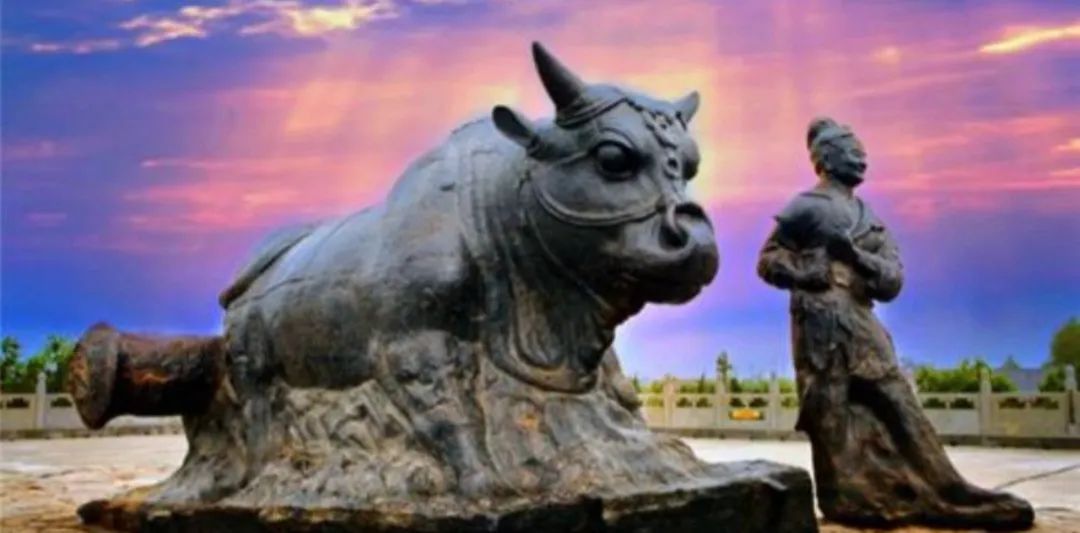
"The waters of the Yellow River rise from heaven and flow to the sea and never return." Since ancient times, the Yellow River has been the mother river of the Chinese nation, and the peoples between the flow of the Yellow River have been able to develop steadily, and there are countless secrets in the rolling Yellow River. The gestation, birth and development of the Yellow River are affected by geological processes. The Yellow River flows endlessly in the process of formation, and at the same time, when passing through the Loess Plateau, it causes a lot of soil erosion, and in the downstream areas, it will flood the gaps, break the yellow river embankment, flood crops, and even wash away the people's houses. And the old saying "thirty years of Hedong, thirty years of Hexi" originally said that the Yellow River, when people in Hedong, thirty years later to Hexi, said that the Yellow River often changes lanes.
The waters of the Yellow River rise from the sky and flow to the sea and never return
"Zhou Yi" has clouds: "Cow elephant Kun, Kun for soil, soil wins water." Thus was born the "Yellow River Iron Bull", which was used to suppress on both sides of the Yellow River Ancient Road. The "Yellow River Iron Bull" fished out decades ago during the opening of the Tang Dynasty has long been turned into a cultural relic after more than 1,000 years of history. Since it was salvaged ashore, why not put it in the museum collection, but let it be placed in the open air for protection?
Experts said: do not dare to move. The Yellow River is the birthplace of national culture, and it has given birth to generations of Chinese sons and daughters. The ancestors relied on this vast land to work and survive, but once it was the drought and flood season, the flooding of the Yellow River was very frequent.
According to historical records, before the Han Dynasty, there were two major floods on the Yellow River; the Western Han Dynasty was as high as eight times. The most serious flood is the Tang Dynasty, which occurred ten times, once the flood occurs, it must be the residents living in the Yellow River Basin who suffer, and the most terrible thing is that after the heavy rain, it will be exposed to the sun. After each drought and flood, it is easy to break out of the plague if it is not properly handled. The Tang Dynasty was founded in 618 by Li Yuan, and by 907 Zhu Wen usurped the Tang Dynasty, enjoying 289 years of statehood.
In these 289 years, there were ten recorded floods in the Yellow River alone, that is, every 28 years or so, the Yellow River would flood. Therefore, people use the five elements to "suppress" and "sacrifice". The Yellow River is water, and at that time, Tang Officials ordered people to spend a lot of money on both sides of the Yellow River (Yongji County) to build four iron cattle, which were placed on both sides of the Yellow River bank in order to suppress the flooding of the Yellow River.
Another function is to stabilize the Pujin Pontoon Bridge built during the Qin and Jin dynasties to ensure smooth traffic and commercial exchanges between the two places. The Yellow River Iron Bull was placed on the banks of the Yellow River during the Kaiyuan period of the Tang Dynasty, when the water level of the Yellow River was not as high as in modern times, and an iron man was placed next to each iron bull as a traction.
Four Yellow River iron bulls
Each iron bull is about two meters high and three meters long, and the horns of the bull are carved with different ornaments, some are lotus flowers, and some are like curly grass and beads. The shape of the iron bull is vividly prone, the front foot is crouched and the back foot pedal, as if carrying a load forward, and the tail of the iron bull also has an iron shaft placed horizontally to bolt the pontoon bridge. According to expert estimates, the iron bulls each weigh about 30 tons, and there are also sites and iron columns below, weighing about 40 tons each.
After excavating the four iron bulls, the expert group adopted a local protection plan, and the original sites of the four iron men and iron cows were placed in the open air without moving, not because they did not want to put the iron cows indoors for safekeeping, but because they did not dare to move. The protection of the Yellow River iron bull in situ can avoid irreparable damage during the movement process, and secondly, modern technology can be used to maintain the iron bull in situ.
Yellow River Iron Bull
The excavation of the "Yellow River Iron Bull" provides valuable historical information for Chinese bridges, metallurgical casting and other technologies. Moreover, the Iron Bull has experienced more than 1,200 years of wind and frost, except for some rust on the surface, and there is no damage in other places. It shows that in ancient times a thousand years ago, the ancestors had anti-rust treatment on it during the production process, and had to admire the wisdom of the ancients.
Chinese culture has a long history, and in the course of development in the past few thousand years, the ancestors have created countless civilization treasures. In the process of promoting the research of modern social history, many cultural relics from ancient times can also provide us with corresponding help, and can also show the world a more real historical development background.